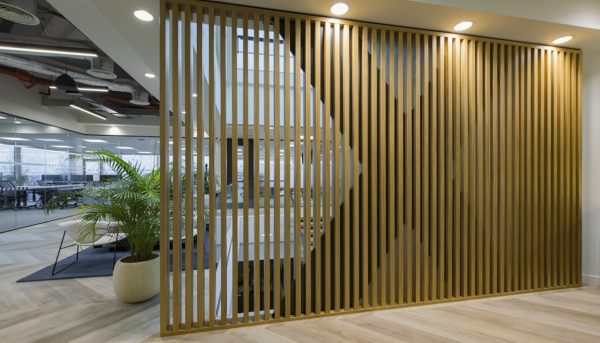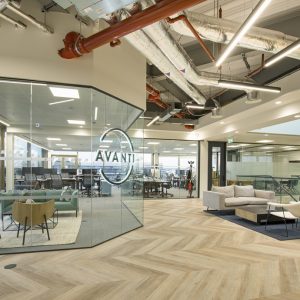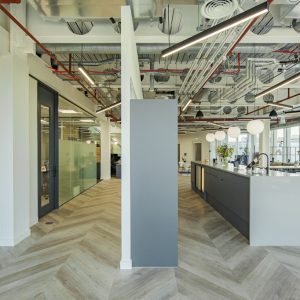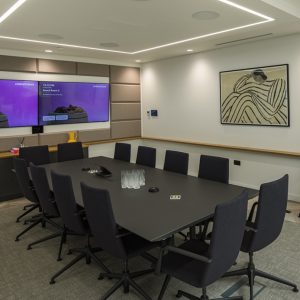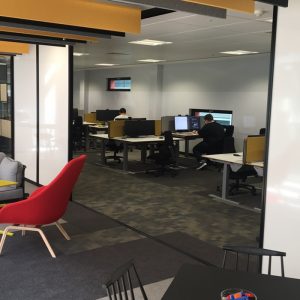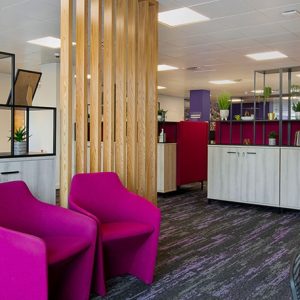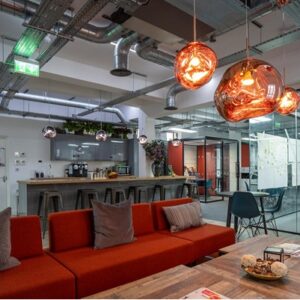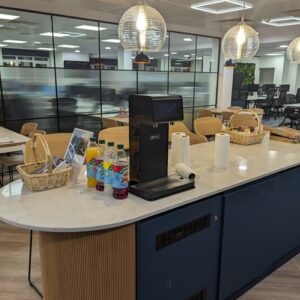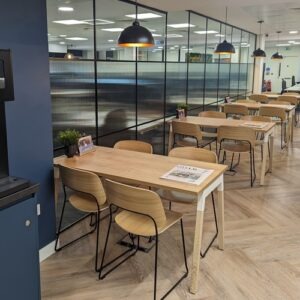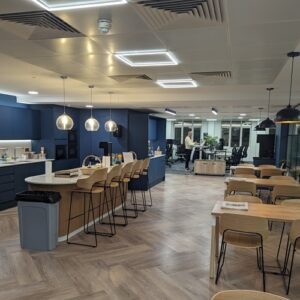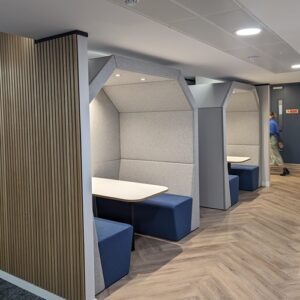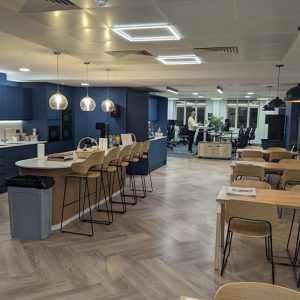Office Design Today
As work and life overlap, people are seeing greater value in mashed-up cultural and working synergy. Office design in London and other urban settings is being reshaped as a consequence. A preference for experience-rich places to live and work is enlivening once sterile city districts and overshadowing remote business parks with no hint of any flow of activities to stay balanced, effective, and connected.
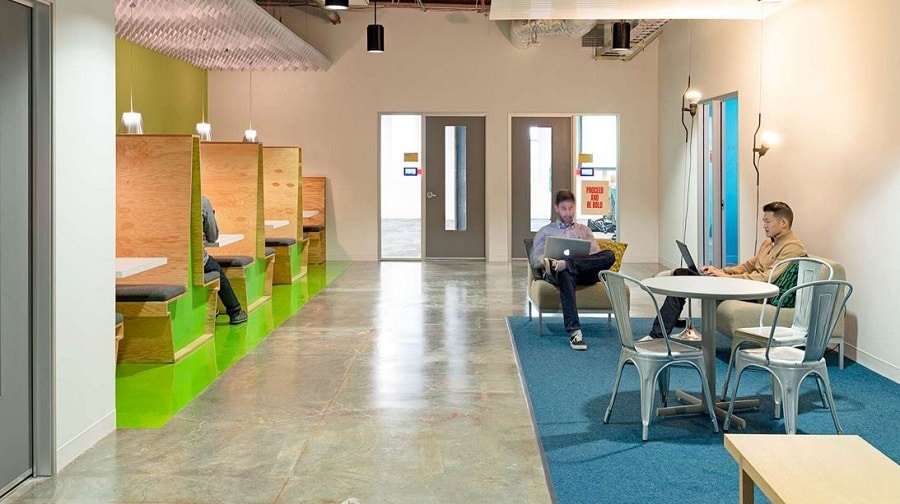
Work, Live, Collaborate
The City of London is a great example of change. 30 years ago the City was just offices, with minimal provision for life after 8pm. Now the City is fringed with homes, alive with street food and cafes, pop-up venues and reasons to stay outside of work. As a result the district is adding new industries and personas.
Office design builds on this trend. Borrowing collaborative working used by creative and tech companies, once staid businesses are remaking themselves to encourage innovation and productivity. The model of one person assigned to one firmly located desk is being abandoned, much like business-only districts are becoming plugged-in to mixed-use cultural scenes. Many companies now seek cross-functional teams that blend different disciplines.
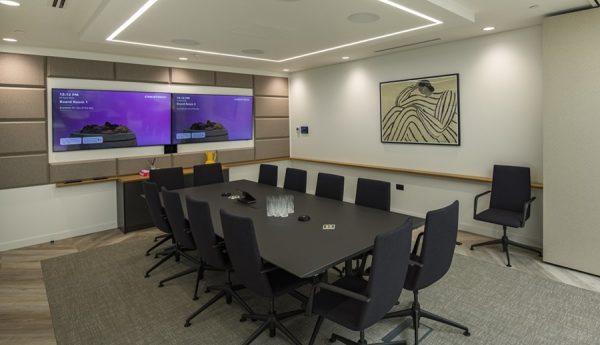
On that topic the best office designs are a mix of spaces that appeal to the visual, and those that are more about function such as a meeting room. Eye catching office interiors can set the style and tone, whilst more functional enclosed rooms are often where the ‘engine room’ of the office reside.
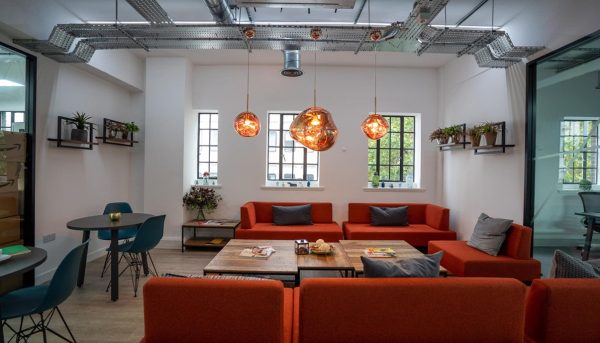
The office design challenge is to create layouts flexible enough to support teams working together when they need to and disperse when a task devolves back to individuals. Open plan office space design must have a high concentration of collaboration areas in order to best support the expand-and-decay working style. Successful new office interior layouts allow for better visual connections, more collaboration within or between departments, or swift movement of individuals to add skill and experience. Just as with the new urban overlap people thrive in this more open, purposeful, environment, where teams and individuals can move around easily, to where they’re needed.
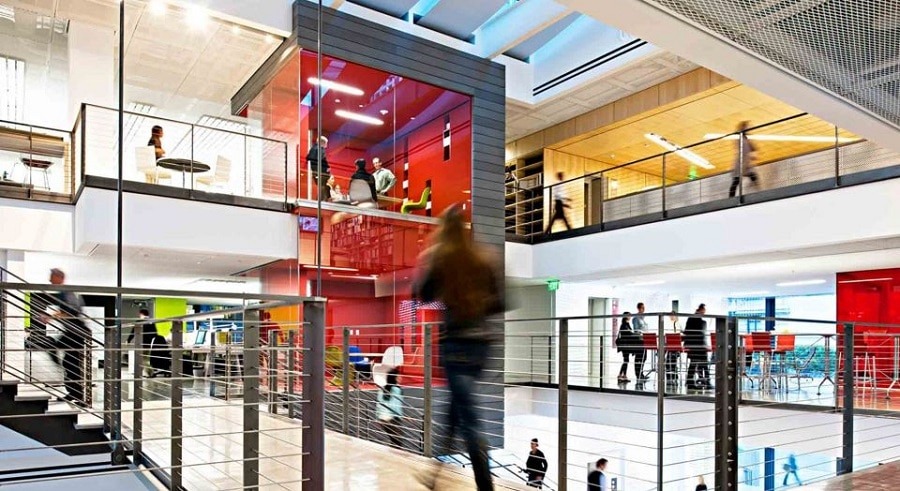
Adapted Leadership
In addition to new ways of working reflecting the new mixed cityscapes, offices also are seeing new leadership styles. Organizations have become flatter hierarchically and as companies learn to manage people through brand, culture and community, the types of workplaces needed to support this leadership form are catching up fast. How this is reflected in workplace design is shown by McCann’s office in London. The cellular offices are arranged along a transit route enhancing transparency by arraying offices around an interconnecting, circular, stairway that wend through the building, making even the executive rooms visible.
The Current Office Design Tone
Among objectives for current office design is creation of a more balanced workplace. An environment where people can focus, collaborate, and build culture around their organization is the tone that is being sought for the workers of today. Balance, by creating a workplace that allows both focus and collaboration, by expression of individuality through experiences, and connection on a social level, are subtle trends. The tech sector is often viewed as being worker-friendly whereas the driver of this perception is more related to the absence of ‘legacy’. Envious trad organisations with multi-generational staff, older buildings and set work practices are seeing tech work hubs and wondering what they can learn and use. This assimilation is sparking the rapid expansion of flexible spaces in non-tech organizations but new furniture alone doesn’t equal new working mindsets. In order to keep people productive and engaged, and attract a new generation of workers, many companies are increasing the size of their collaborative spaces, offsetting the trend in desk footprints to ever smaller desk dimensions.
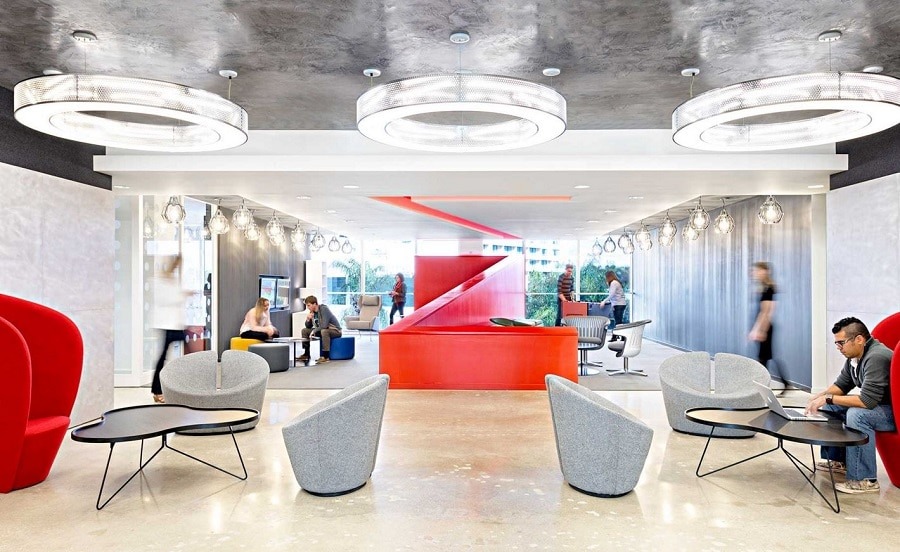
Planning the Mix
Office planning used to allocate between 3 and 5 percent of total space to shared use team space. Recently, 8 to 15 percent is more common. Whole Floors can be entirely for flexible space. Cisco were a halfway house with adjacent desk, hot desk, and team spaces on an open plan floor, with super-concentration booths nearby. The downside is the interference and noise, encouraging the whole-floor approach often including café space if the premises is not in a central locale.
Its not unusual for shared use floors to be connected with a stairway to encourage movement and promote interaction and relationship building across departments.
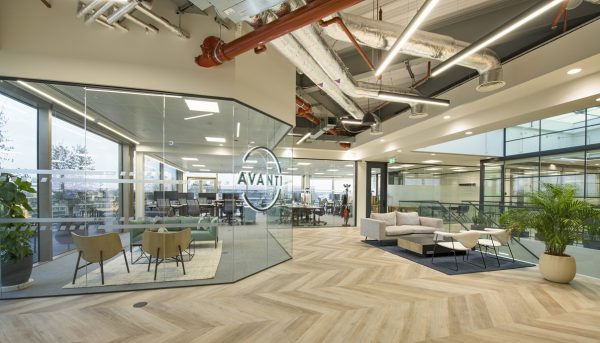
Lifestyle drives office design
New attitudes toward work has big implications, where a young, less money-fixated, generation is attracted to workplaces that fit an urban, walkable, lifestyle. Where people live is changing how they think about their office. Young people want accessible, local, lifestyle, art, and leisure —and this applies equally to their office space.
Concentrating the refreshment and social spaces in one place alongside shared use and team huddle areas encourages idea sharing and cultural mix. Pulling in a different direction, rising office and household rents are driving greater densification and utilization of space leading to fluid work settings where staff accept concentrated conditions so long as adjacent open spaces compensate.
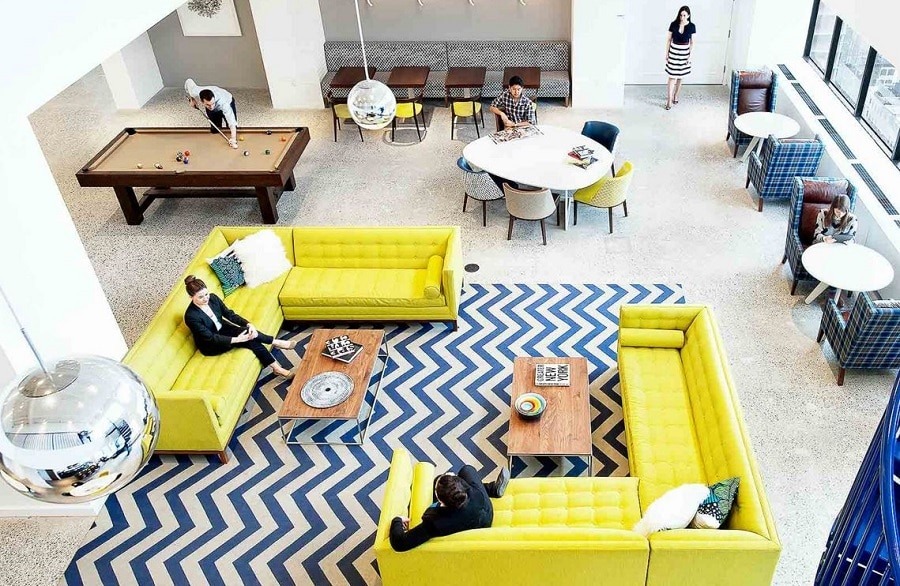
Coworking And Freelancing
The sharing economy is pushing the growth of coworking spaces both as entrepreneurial and innovation hubs and also as a trend for organisations making use of flexible labour resources.
Organisations want to reap the benefits of diverse knowledge and access to talent but in order to do so they need adhoc office space so that sharing economy skills can be properly absorbed, directed and channelled. Collaboration with coworking and freelance team members really puts the spotlight on getting value out of time-limited situations. To enhance innovation and speed to market a sharing format taking internal and external staff is a great concept. Providing valuable office space for this is a challenge. Flexible workshoping and team zones are a good solution. A ‘mash-up’ can be a fertile, interesting, ground where a unique task and team are supported especially as projects are overlapping so many disciplines pushing organisations to become more agile.
The constancy of change in the workplace is a pronounced feature as business is trying to increase agility. The client’s goal is to reposition corporate culture, and current office design encourages a significant shift in work styles to draw on the forces outlined above. A mix of activity-based spaces from collaborative areas to focus zones can be provided, achieving the new office design tone, flexibility and scope for future-proofing. The overriding goal is cultural transformation through workplace design. Informal collaboration is hard to achieve if the idea of a meeting connotes something formal and structured. These areas should have a layer of visual and acoustic definition, yet still adding to the buzz and sense of possibility. Core design values such as connectivity, transparency, and innovation are still desirable within office interior fit outs, but are now equalled by the expand and decay use of space, the walkable urban environments and agile teamwork.
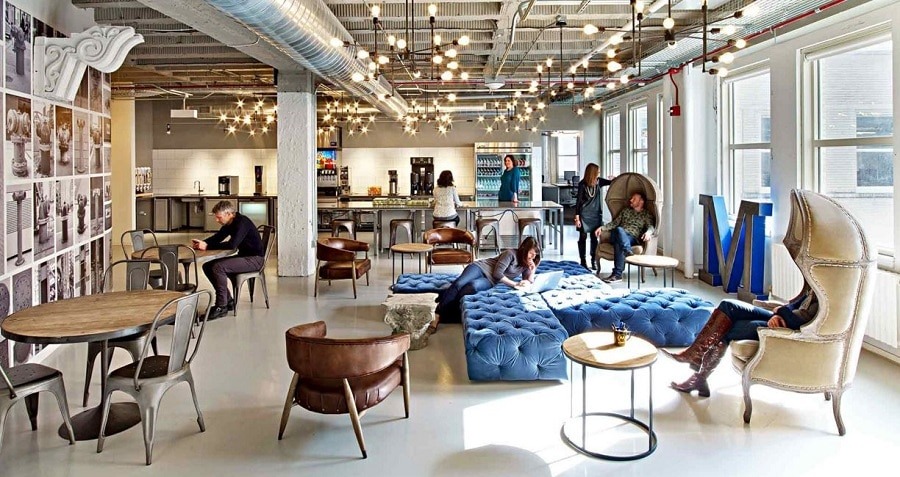
More frequently people are seeking engaging places, where the workplace is seen not only as an office, but also as a town square, restaurant, or source of social engagement. There’s often a health and wellness component. If workplace design has long been based on the idea of a person sitting at a desk, surrounded by filing, equipment and other people, we’re now at a point where mobility is the default work style. By designing places that encourage us to move, not just so we can collaborate but to keep us healthy, then the desk may well follow the PC to become an incidental element of office design. Talk of the office chair being dead is not so far off the mark. As companies seek better outcomes rather than just structured processes, little is sacred. The ideal office design is a place for empowerment both of people and for organisations that support them. People have more opportunity to choose the type of spaces, tools, and co-collaborators they need. It seems certain that the office itself is still a mainstay. Offices have the scale and infrastructure, privacy and branding to provide the immediate connections.
Designing offices to meet the ‘Now’ trends also has a day-2 dimension. Facilities Managers historically service and maintain, and view re-stack projects as a diversion from the routine. Moving to super-agile office design and fit out will involve separation and specialisation. FM outsourcing is increasingly taking day to day servicing tasks away from the organisation. The future for effective FMs may be to facilitate swift, frequent, re-stacks so that the office is constantly evolving and adapting. Dynamic office interiors should not be static. Fleet footed FMs should capitalize.
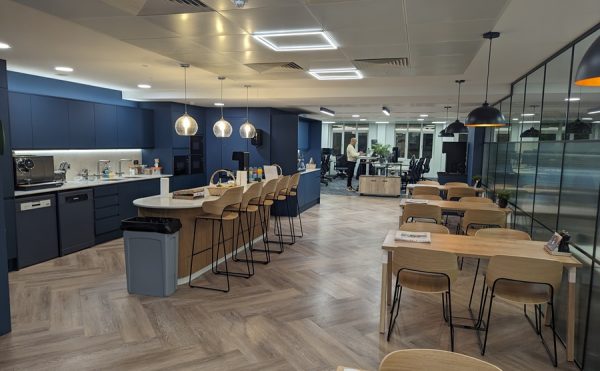
How options are selected and who does the provision are practical hurdles, but organizations that manage to deliver them effectively will have a valuable advantage. While technology enables this, place and people define the experience.
Get in touch with Fusion. We’re happy to talk all things office design and how it can support your organisation. For information on our office design services click here.
